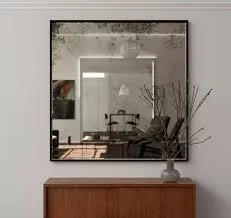

The Art of Decorative Glass Frosting
Decorative glass frosting is an enchanting technique that transforms ordinary transparent glass into a stunning, translucent surface. This method not only enhances the aesthetic appeal of glass but also serves practical purposes in various applications, from residential to commercial settings. The beauty of frosted glass lies in its ability to balance privacy and light diffusion, making it a preferred choice for many architects and designers.
Frosting glass usually involves the application of substances that create a smoother, matte surface. There are several methods to achieve this effect, including sandblasting, acid etching, and applying a frosted glass film. Each technique offers unique characteristics and benefits. Sandblasting, for instance, involves using a high-pressure stream of abrasive particles that physically etch the glass surface. This method is highly customizable, allowing for intricate designs and patterns that can elevate any interior space.
On the other hand, acid etching utilizes hydrofluoric acid or similar chemicals to achieve a frosted effect. This process can create a more uniform appearance compared to sandblasting. For those looking for a simpler, less permanent solution, frosted glass films provide an excellent alternative. These peel-and-stick films can easily be applied and removed, offering flexibility in design and the option to change looks without the need for professional installation.

Beyond aesthetics, decorative glass frosting plays a crucial role in enhancing functionality
. It provides privacy while still allowing natural light to filter through spaces, making it ideal for bathrooms, office partitions, and conference rooms. By preventing direct visibility, frosted glass creates a sophisticated atmosphere without sacrificing illumination, fostering a sense of openness and comfort.The design possibilities with frosted glass are virtually limitless. From simple frosted panels to elaborate custom artworks, the options are driven by creativity and functionality. Various motifs, textures, and finishes can be incorporated, allowing homeowners and businesses to express their style while maximizing the utility of their spaces. Additionally, frosted glass can be used in a myriad of products, including shower doors, windows, cabinet doors, and even light fixtures.
In recent years, the trend toward sustainable and energy-efficient design has also embraced decorative glass frosting. It can help in reducing glare and excess heat from the sun while still retaining an airy ambiance within a room. Incorporating frosted glass into architectural designs not only enhances beauty and privacy but also contributes to overall energy efficiency.
In conclusion, decorative glass frosting is more than just a trend; it is a timeless approach that combines artistry and functionality. With its ability to transform spaces and enhance privacy without compromising light, it remains a popular choice for both residential and commercial designs. As the world of interior design continues to evolve, frosted glass will undoubtedly maintain its place as a favored medium.